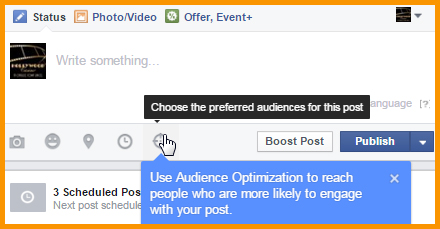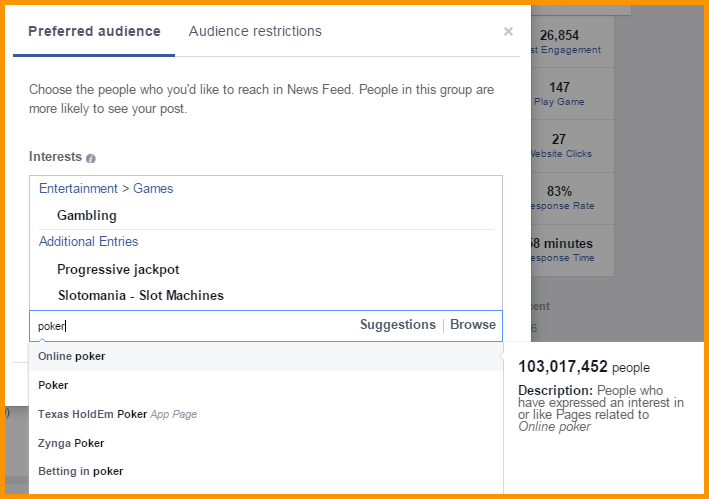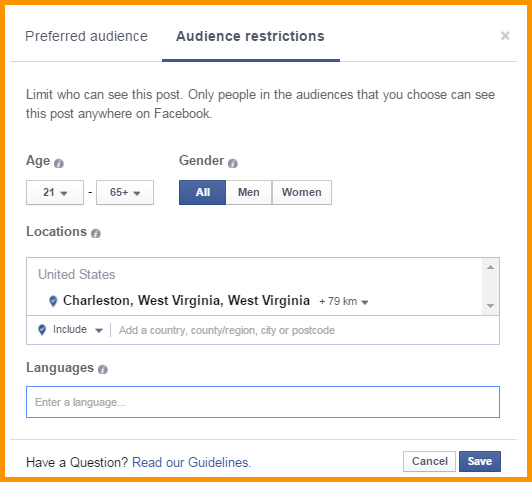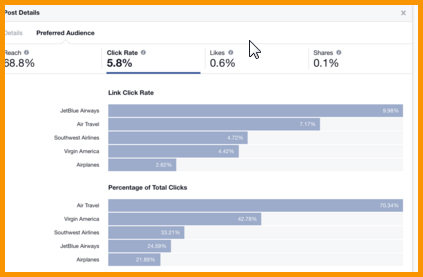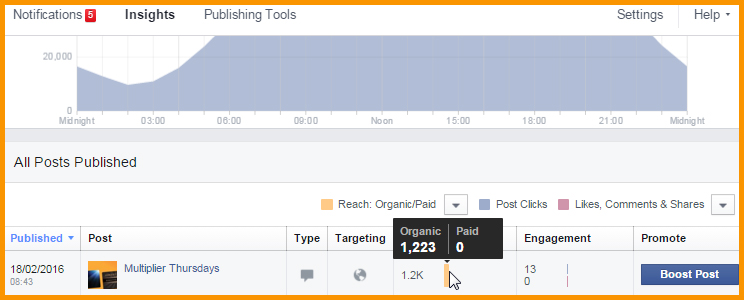Orange Juice
Your
quarterly
vitamin.
Written on 05/19/16 7:24 PM
by Margaret Chaidez
Facebook Local Awareness Ads (FLAs )were introduced in late 2014 to help advertisers drive awareness through hyper-targeted messaging. The ads can target customers where they live as well as where they currently are located (visiting a business, working or traveling). Advertisers can target customers within a radius of as little as one mile or up to 50 miles.
Until recently, advertisers could only select age, gender and radius with no option for interest targeting. Facebook has recently added Interest targeting for Local Awareness Ads.
The ads are available for Mobile and Desktop only, currently not for Facebook Audience Network (which provides additional reach on 3rd party Facebook-approved apps). Ads can contain a single image, video or a maximum of 5 images. Unique Calls to Action only available with FLA include: Get Directions, Call Now, Send Message (Learn More is also available).

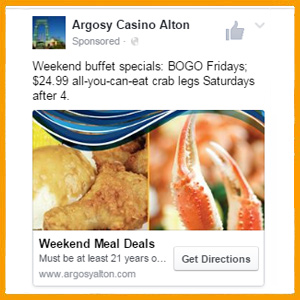
Potential Uses for Local Awareness Ads
-
Recruiting
-
Dining Specials
-
Hotel Specials
-
Casino Promotions
-
Jackpot Winners (custom ads based on local winners)
-
Target competitor’s customers with an offer
-
Promote reviews of the property for gaming, hotel, events and dining
-
Sporting events promotion and local events
Next Steps
For users, seeing an ad in their newsfeed at the right time, with a targeted message, creates an immediate connection and typically a response. Using the ‘Get Directions’ CTA on a lunch offer, for example, can help drive traffic to your property.
Facebook has recently introduced Canvas, a new advertising option for brands to create a full-screen mobile-only experience. Facebook mobile-only users currently total 827 million, a number that is growing each quarter.
What is Facebook Canvas? Canvas is a mobile-only experience and works on both Android and iOS. Facebook Canvas allows interactive elements like text, animations, carousels, tilt-to-view images, and videos to be incorporated in one ad unit. Currently Canvas is only available through Facebook. However, Facebook is evaluating how to expand this functionality to other apps including Instagram.
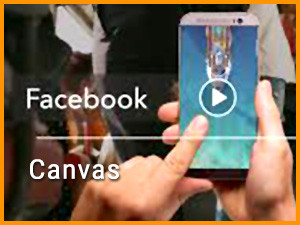
How Does Facebook Canvas Work?
Users interact with Canvas ads by clicking an arrow in the upper right hand corner of an ad. It opens a full-screen, rich media page inside of Facebook, rather than directing users to a separate mobile site. To escape Canvas ads, users need to swipe left on the arrow in the upper left hand corner.
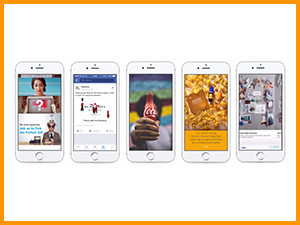 There’s no additional cost to run a Canvas ad. Advertisers also can leverage the same level of custom targeting. Advertisers can include links to product pages that will open up a mobile site.
There’s no additional cost to run a Canvas ad. Advertisers also can leverage the same level of custom targeting. Advertisers can include links to product pages that will open up a mobile site.
Benefits for Advertisers Facebook sees 8 billion video views a day from 500 million users, which amounts to 100 million hours of time spent watching videos per day.
Canvas is a great solution for advertisers that don’t have a responsive website or may have a mobile site that is slow to load. Canvas is new and different so engagement tends to be higher. Canvas uses the same technology that makes photos and videos load quickly on Facebook so users tend to stay engaged longer. Canvas loads as much as 10 times faster than the standard mobile web.
RPM Advertising Recommendations: We recommend working with your Account teams to determine a test of an HTML5 display banner and a Facebook Canvas ad. We will evaluate performance based on reach, engagement, CTR and CPC and share those insights. Audience targeting and geos will remain the same for both units as will creative messaging, with Facebook Canvas allowing for video and animations if available. Flight duration should be 3-4 weeks to allow the HTML5 banner sufficient time in the marketplace.
Facebook has released Audience Optimization, a targeting tool to help brands engage their audience organically on Facebook and better understand the interests of users clicking on their posts. The average organic reach of a Facebook post is 2.6% (source: Locowise) which means your posts aren’t reaching your full fan base unless you pay. The Audience Optimization tool offers 3 features:
Preferred Audience: Add tags to describe the interests of people who are most likely to like your post.
Audience Restrictions: Limit the visibility of your content to specific demographics (21+) and prevent a post from being seen by people anywhere on Facebook.
Audience Insights: Audience insights show you how each interest tag you set contributed to a post’s reach, clicks, shares and likes.
Getting Started Step 1: When creating your posts, click the crosshairs icon in the bottom right hand corner. The feature is automatically enabled for pages with more than 5,000 fans.
Step 2: Setting the Preferred Audience The Preferred Audience option will allow you to select interests that you most likely will appeal to your current fan base. The interests will make it more likely that the fans will see your post. You can manually enter a maximum of 16 interests or Facebook can make recommendations based on pages your fans have liked. With Preferred Audience, interest tags help prioritize posts that are most likely to be engaging for a person without limiting visibility for others. Start entering interests and Facebook will make suggestions as you add. Be sure to click “Save” before you move to Audience Restrictions.
It’s important to note you are using interests to appeal to your general fan base, not list keywords contained in the post.
Step 3: Audience Restrictions Audience Restrictions ensures your post is seen by specific people only (based on age, location, gender and language). You can complete all fields or adjust only one.
Write your post and publish. Once the post is published and fans start seeing the post you can view which interests garnered the strongest engagement among fans. Within your Insights tab, select the post that used Audience Optimization. Click on “Preferred Audience” to see how each interest tag you set contributed to a post’s reach, clicks, shares and likes.
Final Steps Before you start testing audience optimization, look at past performance of your posts. We recommend creating a content calendar with a handful of posts to test with similar content and experiment with interests first. Once the interests categories are performing well, start adding more new types of posts and expand your interests.
